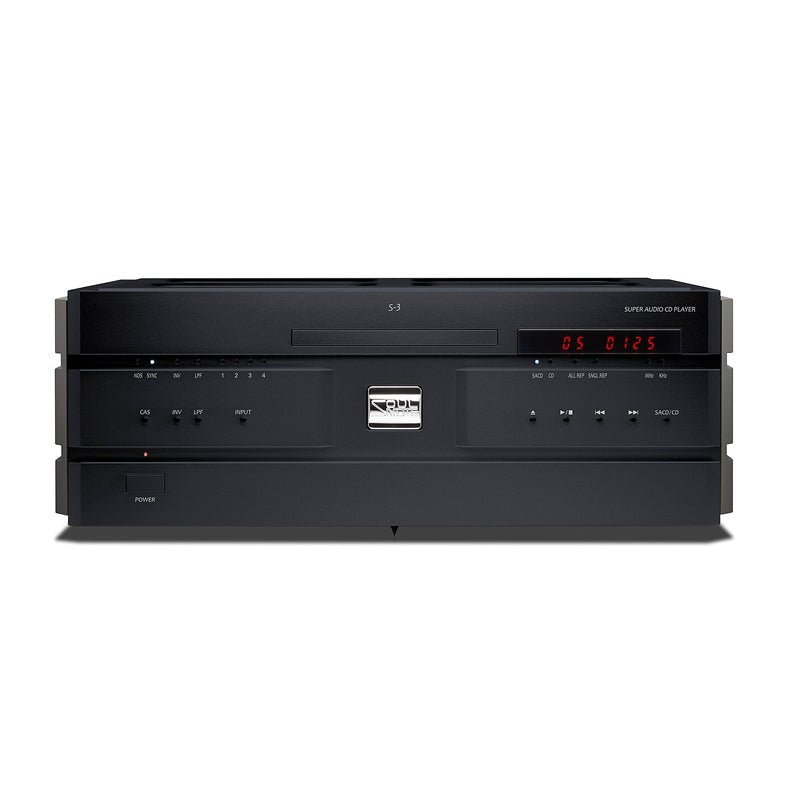SOULNOTE Chief Designer Kato's Design Philosophy Series Part 3
In an age dominated by universal science, many believe that it's impossible for humans to perceive differences undetectable even by the most advanced measuring instruments. However, isn't it a fact that numerous values around us resist easy quantification?
Take cooking as an example. Even if we measure each ingredient with impeccable precision, down to 0.0001g, a dish prepared by a world-famous chef and one made by me would undeniably taste different. This discrepancy arises because cooking involves more than just the ingredients; it's about the chef's unique skill. Can we quantify this skill or the taste of a dish? Presently, the only way to judge a dish's taste is by savouring it.
Consider automobiles. Two cars with identical engine power and weight might not yield the same lap time on a circuit, even with the same driver. Factors like body rigidity and suspension settings can dramatically affect performance, particularly when cornering. Yet, car catalogues seldom detail cornering performance. In essence, one can't fully understand a car's capabilities without driving it. This holds even in advanced realms like F1 racing, where despite extensive electronic systems and simulations, final tuning requires a driver's direct experience.
While my examples concern food and cars, you might argue they have no connection with audio. True. But my point is that not everything valuable can be numerically expressed. I'm merely drawing parallels.
Sound quality in audio stands apart because it doesn't merely resist measurement by specs; sometimes, superior specs might degrade the sound. This concept will be elucidated in the next instalment.
To be continued.
SOULNOTE Chief Designer Kato's Design Philosophy Series Part 4
In Part 1, I mentioned a novel approach I envisioned to achieve unparalleled sound quality. Now, let's delve into this idea. But first, we must address the "curse" that has obscured this understanding.
Typically, after enhancing the catalogue specs, the sound quality is tuned. However, this method can be misleading. As previously mentioned, many aspects of performance resist numerical representation. Similarly, in audio, factors that alter the sound, whether due to cables or other elements, might not be easily quantifiable or even widely recognized.
A conventional audio engineer might ponder, "Why not enhance the distortion ratio, signal-to-noise ratio, and frequency response, and subsequently refine the sound quality?" This mindset dominated the past, especially during the peak of catalogue spec competition, and persists even now in digital audio. The perilous assumption is that sound can't degrade when specs improve. Yet, overemphasizing specs often deteriorate sound quality. The underlying reasons, albeit extensive, are crucial.
Sound inherently has two dimensions: Amplitude and Time. Every audio source records amplitude against time, applicable to both digital and analog mediums. Without the time dimension, sound is non-existent. While videos can have "still images", there's no "still sound" in audio. Have you ever encountered one?
Often, we utilize sine waves for measuring catalogue specs due to their convenience. These continuous single-frequency signals are devoid of dynamic variations, making their measured results mostly devoid of temporal factors. Sound is composed of "amplitude" and "time", but catalogue specs largely sidestep the "time" element for easier quantification.
FFT (Fast Fourier Transform) analyzers are popular for sound analysis. Simplified, FFT converts the time dimension into a frequency one for streamlined analysis. This conversion, known as the Fourier transform, often disregards the time factor. This has led to an over-reliance on the Frequency dimension, sidelining the Time aspect, which I term as the "Fourier's curse".
Performance metrics like distortion rate, frequency response, and signal-to-noise ratio, which can be cataloged, are dubbed static performance. In contrast, those related to the time dimension, which defies easy quantification, are labelled dynamic performance.
Dynamic performance is akin to a chef's culinary prowess or a car's cornering ability. Notably, these performances also revolve around the time dimension and are tough to quantify. As humans, we seem predisposed to neglect time in favour of quantifiable measures. The true essence of any performance, however, can only be grasped by experiencing it—be it through tasting, driving, or listening.
Furthermore, a trade-off exists between static and dynamic performance beyond a certain threshold, grounded in the intricacies of human auditory perception.
Postscript
A fitting analogy here would be a drag car, optimized for straight-line acceleration over 400m. While it might outpace an F1 car in a straight line, its inability to turn renders it ineffective on a circuit. Relating this to audio, the act of listening to music resembles driving on a varied circuit. Overemphasis on static performance (akin to straight-line acceleration) hampers the equipment's ability to faithfully reproduce music.
With cars, prioritizing straight-line speed hinders cornering improvements. Similarly, in audio equipment, the routine of first bolstering static performance before sound quality tuning might be insufficient.


